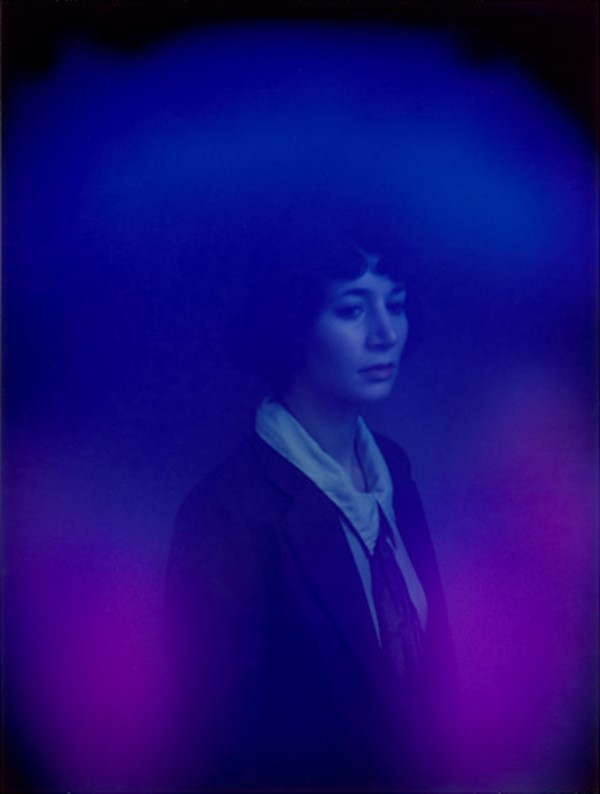Aura photography has been fodder for paranormalists since its accidental discovery by a Russian scientist in 1937. Purported to be evidence of the ‘human atmosphere’ or energy field, its colours represent the electromagnetic disposition of its
Aura photography has been fodder for paranormalists since its accidental discovery by a Russian scientist in 1937. Purported to be evidence of the ‘human atmosphere’ or energy field, its colours represent the electromagnetic disposition of its subjects and range from ‘force of will’ red to the more zen-like blue and violet. The first production of aura photographs was done with a series of high-voltage generators, metal plates, electric terminals and photographic paper – a dangerous and painful process more suited to plants than people. An American electronic engineer later refined the technology using a Polaroid camera hooked up to metal hand sensors and a printer. The dubious nature of aura photography and its legacy in occultist circles has made it an ideal raw material for artists looking to mine its potential for conceptual interpretation – or, as in the case of New York-based photographer Carlo van de Roer, to explore the complicated and often uneasy relationship between photographer, camera and subject. For the past few years, Carlo has been using a Polaroid aura camera to photograph well-known New York artists, writers, filmmakers and photographers, among others. His exhibition, The Portrait Machine Project, currently runs at M + B Gallery in Los Angeles.
What’s the show about? Who’s in it?
There are about 10 photographs in the show, mostly portraits of people who had been familiar to me in some way before I shot them – Miranda July, Terence Koh, Philippe Starck. There are also a couple of very recent portraits, like a pair of images of Waris Ahluwalia and a pair of my girlfriend Maris. I found that the aura camera was a great tool for exploring the nature of portraiture itself – it’s an excessive example of a familiar idea, that a camera can reveal an otherwise unseen insight.
What about the project – did you have any interesting or bizarre experiences while you were shooting?
The whole process was pretty unusual for me. The camera only has one button, so I can’t control the focus or the exposure or most of the things I'm used to controlling. Everything was at the mercy of the camera, and trying to control it often became really physical. In the beginning, I tried to stay pretty uninvolved, tripping the shutter almost blindly. But it’s hard to resist getting involved, and in the end I’d get more and more involved, and that would make the subject get more involved too – and then it would become this sort of power play between me, the subject and the camera. I’d try to influence the subject and the subject would try to control the camera…
What is the camera like?
It’s a metal box about the size of a large shoebox attached to a bunch of ancient-looking cables. The subject is connected to the camera by hand plates that read electromagnetic biofeedback. The feedback is converted into interpretations of the subject, which is in turn depicted as colour in the Polaroid. The camera is also connected to a printer, which produces a printout with a color-coded diagram and description of what the colours represent.
Did you see that there's a Susan Hiller retrospective at the Tate in London? Some of her aura photos are up. Can you talk a bit about the difference in your approaches to aura photography?
I don't think Susan Hiller shoots the aura photographs herself. They’re found photographs. From what I’ve seen of her work, it’s more concerned with the paranormal, the spectral.
Your work explores ideas about the authorship of the photographer and issues surrounding contemporary portraiture, whereas hers was more concentrated on the spiritual aspects of the practice of aura photography...
The act of making the photographs was important to me – engaging with the subject, and with a camera that is supposedly excessively insightful, becoming involved in that relationship.
Did people try to influence how their auras would look?
Sure. One guy was so sure his portrait shouldn’t be red that he jumped into the deep freezer in the studio to try to cool down and change the portrait, but the angrier he got about it the redder it became. Another person left and came back wearing a giant crystal.
The Portrait Machine Project runs at M + B Gallery, Los Angeles until 14 May.
Text by Julie Cirelli
